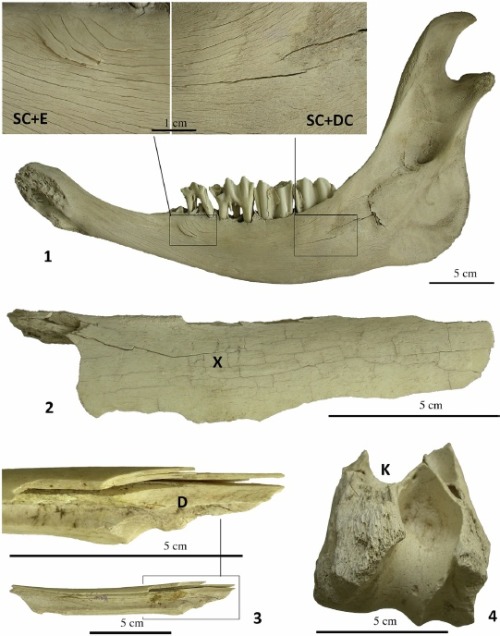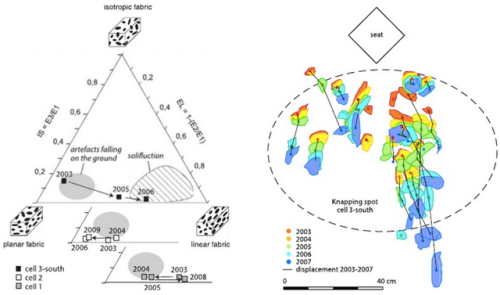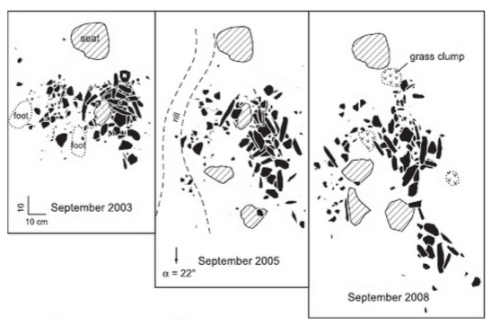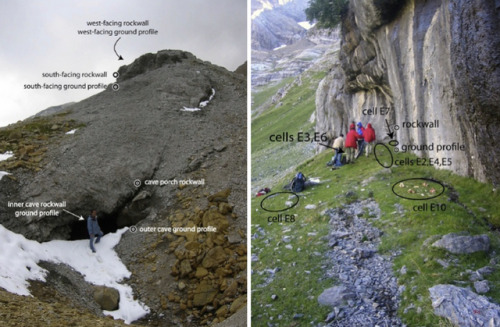#experimental archaeology
Experimental archaeology in a mid-latitude periglacial context: insight into site formation and taphonomic processes
- by Pascal Bertran, Cédric Beauval, Stéphane Boulogne, Michel Brenet, Sandrine Costamagno, Thierry Feuillet, Véronique Laroulandie, Arnaud Lenoble, Philippe Malaurent and Jean-Baptiste Mallye
“Experiments have been carried out at two sites in periglacial (MAAT ≈ 0 °C) and alpine (MAAT ≈ 4 °C) contexts in the Pyrenees, including open-air and cave loci, to document in detail the role of site formation processes and taphonomic agents in the degradation of archaeological assemblages. In both sites, the experimental cells have undergone significant changes over the five years of measurements. These are marked by slow downslope creep of lithic artefacts due to solifluction, rain creep, and the impact of debris fallen from the wall in the cave. The behaviour of bone material was significantly different from that of lithics, due to the activity of scavengers. This was responsible for scattering a high proportion of bone remains, and displacements were typically significant. Such activity was also responsible for a high number of bone elements being lost (1/3 to 2/3 of the bones). Weathering, mostly cracking and exfoliation, also affected dry bone material in the open-air cells. The measurements have highlighted the specific nature of the cave context, which plays a protective role for bone remains against meteoric agents. The talus at the entrance of the cavity was also characterized by a strong spatial heterogeneity in sedimentary processes, which may generate a differential preservation of the assemblages” (read more/open access).
(Open access source:Journal of Archaeological Science 57:283-301, 2015 via Academia.edu)
Post link
Experiments show why early humans began adding handles to tools
“The work by the researchers entailed enlisting the assistance of 24 male and 16 female adult volunteers to conduct early human type activities using both hafted and unhafted tools—each was fitted with a suit holding sensors that measured motion, muscle contractions, oxygen consumption and the speed at which tools were moving through the air.”











